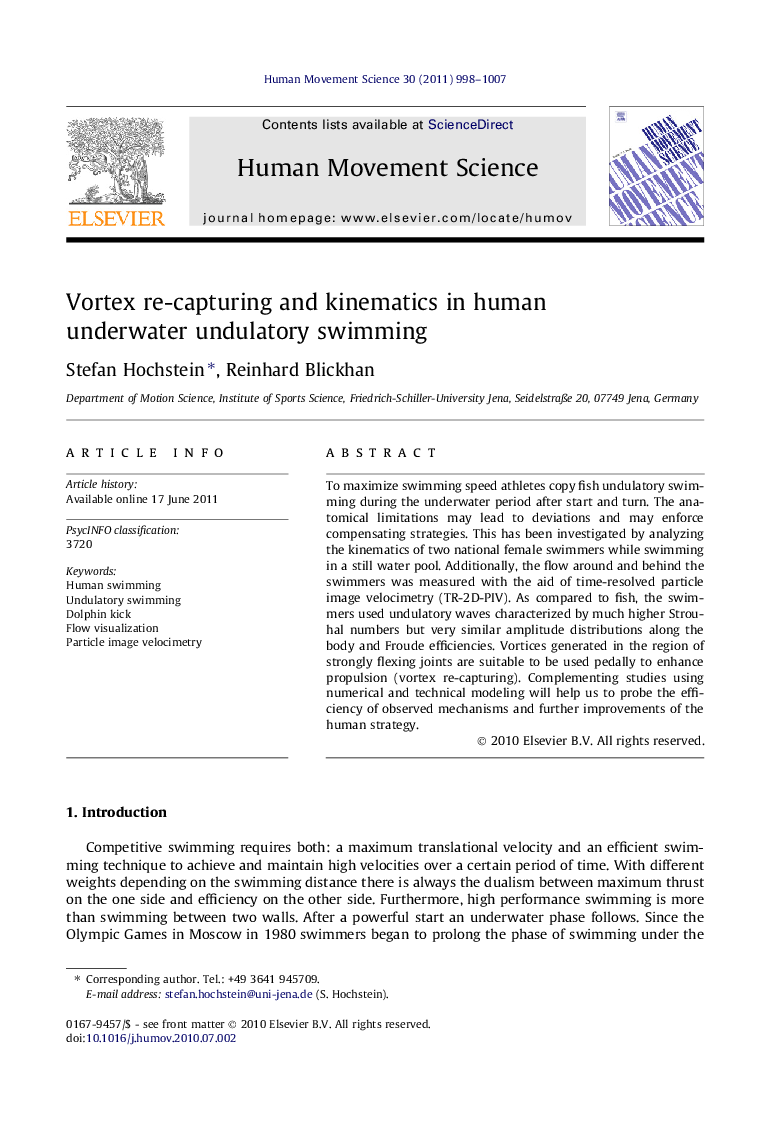| Article ID | Journal | Published Year | Pages | File Type |
|---|---|---|---|---|
| 928616 | Human Movement Science | 2011 | 10 Pages |
To maximize swimming speed athletes copy fish undulatory swimming during the underwater period after start and turn. The anatomical limitations may lead to deviations and may enforce compensating strategies. This has been investigated by analyzing the kinematics of two national female swimmers while swimming in a still water pool. Additionally, the flow around and behind the swimmers was measured with the aid of time-resolved particle image velocimetry (TR-2D-PIV). As compared to fish, the swimmers used undulatory waves characterized by much higher Strouhal numbers but very similar amplitude distributions along the body and Froude efficiencies. Vortices generated in the region of strongly flexing joints are suitable to be used pedally to enhance propulsion (vortex re-capturing). Complementing studies using numerical and technical modeling will help us to probe the efficiency of observed mechanisms and further improvements of the human strategy.
